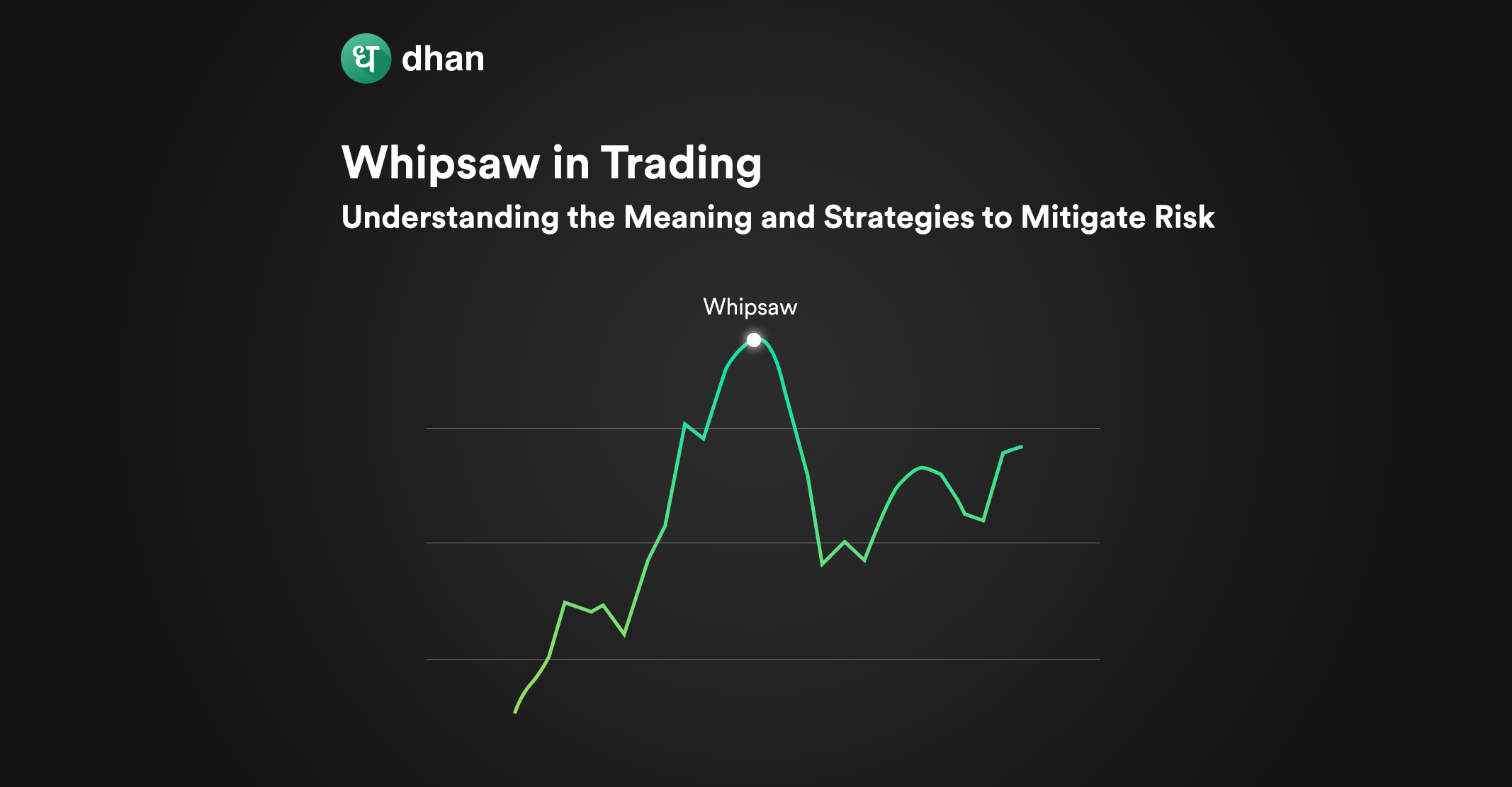Have you ever been caught off guard while trading stocks online by sudden price changes? That, dear reader, is a classic case of whipsaw in trading. Let’s analyze this phenomenon and discuss strategies to mitigate the associated risks.
What is Whipsaw in Trading?
A whipsaw is a trading term that refers to an unexpected rise or fall in the price of an asset against an ongoing trend.
Think of it as a sharp nosedive out of nowhere in what was once a range-bound or otherwise regular market.
The image below will show you what a whipsaw looks like on a technical chart.
The term “whipsaw” originates from the tool known as “whipsaw” which was used to cut through logs of wood. Once someone’s used the tool successfully, the log breaks and falls off suddenly.
But right before, the whipsaw itself moves to and fro while eventually slicing the log, representing the movement of the security in a range before the sharp nosedive eventually occurs.
Check out the image below of an actual whipsaw in action.
You could say that whipsaw is quite different from other forms of reversal. There is context to say, a regular bullish or bearish reversal pattern, and the change in momentum is almost predictable.
But whipsaws are not. That said, there are two types of whipsaws:
- Upmarket: The price breaks out upward, followed by a sudden downward move
- Downmarket: The price briefly falls and is then followed by a surge upward
Identifying Whipsaw with Patterns & Indicators
This can be challenging, especially during highly volatile market conditions. Whipsaw in trading often occurs when prices experience sharp and sudden movements without any apparent reason.
These situations frequently occur when stocks are overbought or oversold, but the trend continues despite the signals given by technical indicators.
In times of abnormal trading activity, you might think that a rising or falling market trend will continue without end. Or, the market will trade in a range where there’s no real influence of bulls or bears.
But then the whipsaw hits and your position is wiped out. For instance, if a stock is trading at INR 350 and indicators suggest it is overbought.
Yet you continue buying, driving its price up to INR 400, a sudden market reversal to INR 320 would be considered a whipsaw.
If you had opened a long position based on the indicator’s signals, you would potentially face significant losses without proper precautions.
One way of identifying whipsaw is by using the following technical indicators:
These indicators are useful in understanding whether a stock is overbought or oversold. You could even use fundamental analysis to spot a whipsaw.
Strategies to Manage & Avoid Whipsaw
To manage or minimize the impact of whipsaw in your trading, one strategy is to utilize regular or trailing stop-loss orders.
By attaching a stop-loss order to your positions, you can set a predetermined threshold at which the position will automatically close if the market turns against your trade by a certain amount.
While this approach limits potential losses, it also means that if the market reverses in the original direction, your position would have been closed prematurely.
As they say, it’s better to preserve your trading capital than to blow up due to just one bad position.
To avoid whipsaws in trading, there are also a few other strategies you can employ. Here is how to avoid whipsaw in trading:
1. Define a Clear Trading Plan
Before entering any trade, develop a well-defined trading plan that includes your entry and exit points, stop-loss levels, and profit targets.
Keep to your strategy and avoid making quick decisions based on short-term changes in the market.
2. Check Multiple Time Frames
Analyze the market using different chart time frames, such as daily, hourly, and weekly.
This helps you gain a broader perspective and reduces the chances of getting caught in short-term whipsaws.
Look for trends and patterns that align across multiple time frames before making a trading decision.
3. Use Confirmation Indicators
Consider using multiple confirmation indicators rather than relying on a single indicator or signal.
This helps to filter out false signals and reduces the risk of falling victim to whipsaw movements.
For example, you could combine technical indicators like moving averages, MACD, or RSI to validate your trading decisions.
4. Apply Volatility Filters
Whipsaw movements often occur during periods of low market volatility. By incorporating volatility filters into your trading strategy, you can avoid trading during highly unpredictable market conditions.
Volatility indicators like Average True Range (ATR) can help you gauge market volatility and adjust your trading approach accordingly.
Example of Whipsaw Strategy
Meet Mr. Whip E. Saw, an experienced trader who is closely monitoring ForestFell Lumber’s recent price movements. He notices that the stock has surged significantly, with the RSI soaring above 70.
Recognizing this as a sign of an overbought market, Mr. Whip E. Saw contemplates entering a short position, expecting a potential correction.
However, there’s a twist in the tale. He’s caught off guard by a sudden surge in positive economic data.
The news sparks renewed optimism in the stock, and the market swiftly reverses its course, leaving Mr. Whip E. Saw caught in a whipsaw. His short position is now a disaster.
Determined to avoid such painful situations in the future, he revisits his trading strategy.
Mr. Whip E Saw realizes that relying solely on a single indicator can be risky, especially during times of rampant volatility.
Priya decides to combine the RSI with another momentum indicator like MACD to confirm trading signals.
By waiting for a crossover between the MACD and its signal line before entering a trade, he aims to strengthen his decision-making process.
Additionally, Mr. Whip E. Saw acknowledges the importance of risk management. He sets tight stop-loss orders to limit potential losses and prevent a small whipsaw from turning into a disaster like last time.
Conclusion
Encountering a whipsaw in trading is like facing a sudden storm on a seemingly calm sea. Unpredictable yet inevitable, whipsaws can unsettle even the most calculated trading strategies.
The secret to successful trading lies in your ability to adapt and navigate through the erratic market currents. Remember, every challenge in trading is an opportunity for learning and growth.
Like this? Then you’ll love:



